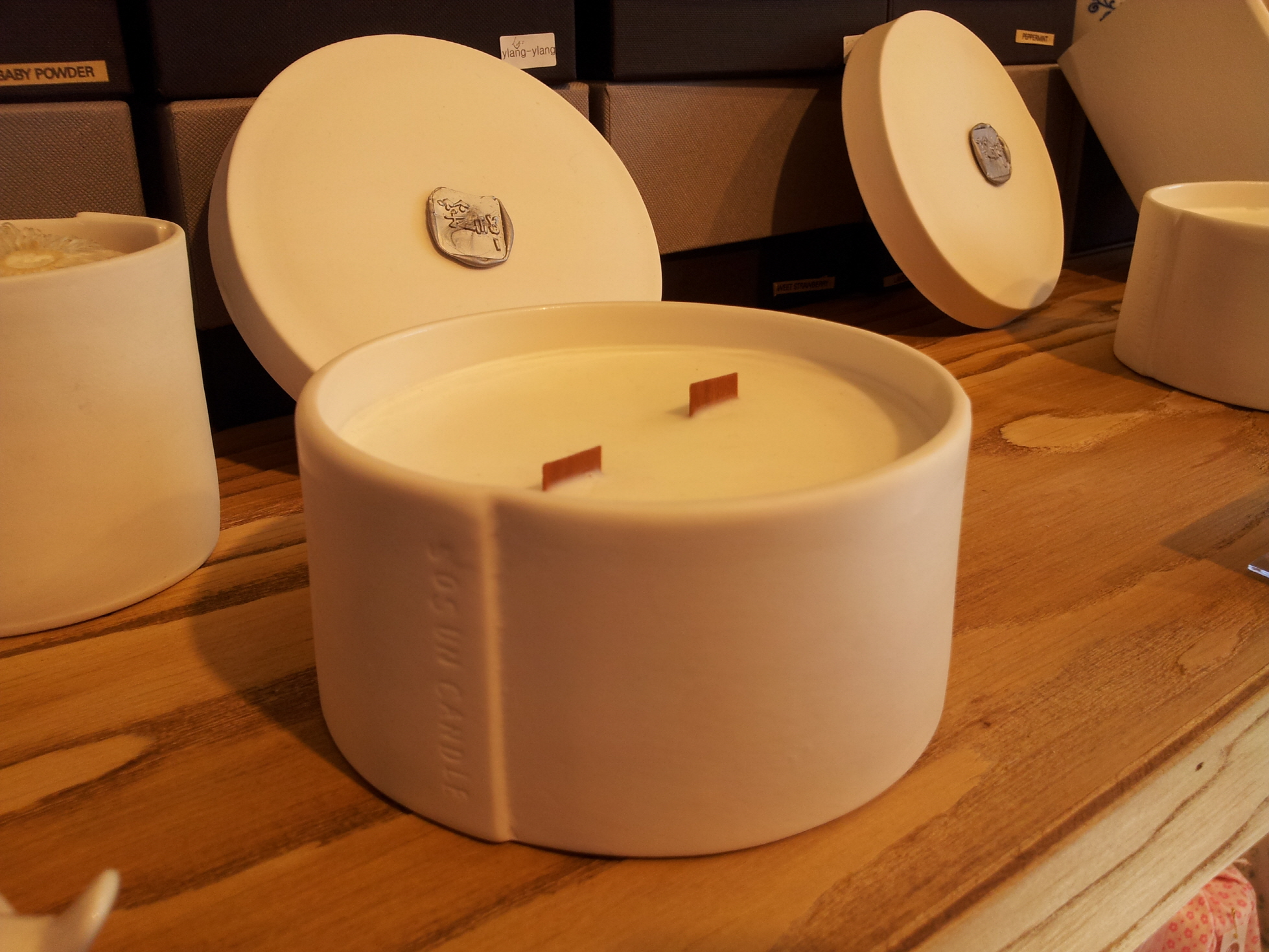When we buy candles, we generally consider how they look or how they smell. Therefore, most candle makers carve their candles artistically or add scents to the candle waxes (e.g., Red Roses of Jo Malone). However, some candle makers pay attention to a different aspect of candle: wick.
A candle wick is usually a braided cotton that holds the flame of a candle. Wicks can be made of material other than string or cord, such as wood, although they are rare (Wikipedia). Recently, I met a candle maker who was selling wood wick candles. She told me her candles make a relaxing SOUND of burning wood. Since I was fascinated by the sound, I bought her candle without considering how it looked or how it smelled.

Designers and marketers are always searching for latent needs, the needs that consumers do not express verbally. Since a wide variety of shapes and scents are existing in the candle market, candle designers and marketers consider innovating their candles by offering different types of burning sounds.
**
Reference
Urban, G. L., & Hauser, J. R. (2004). “Listening in” to find and explore new combinations of customer needs. Journal of Marketing, 68(2), 72-87.
By “listening in” to ongoing dialogues between customers and Web-based virtual advisers (e.g., Kelley Blue Book’s Auto Choice Advisor), the authors identify new product opportunities based on new combinations of customer needs. The data are available at little incremental cost and provide the scale necessary for complex products (e.g., 148 trucks and 129 customer needs in the authors’ application). The authors describe and evaluate the methodologies with formal analysis, Monte Carlo simulation (calibrated on real data), and a “proof-of-concept” application in the pickup-truck category (more than 1000 Web-based respondents). The application identified opportunities for new truck platforms worth approximately $2.4 billion–$3.2 billion and $1 billion–$2 billion, respectively.

Typically, when consumers buy candles, they consider the candle’s appearance and scent. Most manufacturers also focus on these aspects when creating their products. However, one candle company chose to innovate by focusing on the wick. They selected wooden wicks, which produce a comforting crackling sound when burned, adding another layer of appeal. This is a prime example of addressing consumers’ subconscious needs. The author, captivated by this sound, purchased the candle without considering its appearance or scent.
I can personally relate to the concept of discovering latent needs through my daily use of a product: the Dyson Airwrap. To introduce the Dyson Airwrap briefly, it is an innovative hair styling tool that uses “six types of styling tools,” “the Coanda effect,” and “intelligent heat control technology” to style hair without excessive heat damage.
Before the Airwrap, the main hair styling methods were “Iron styling” and “Dry styling.” Each method has its pros and cons. Dry styling involves wrapping hair around a round brush and using a blow dryer. While it causes less hair damage compared to iron styling, it requires high skill, takes a long time, and doesn’t hold the style well. On the other hand, iron styling is easier to perform and maintains the style longer, but it significantly damages the hair. Most women, including myself, preferred iron styling because of the time constraints before going out. However, the downside is severe hair damage, with risks of hair melting or breaking. In this dilemma, the Dyson Airwrap emerged as a solution, stimulating consumer desire despite its high price.
The Dyson Airwrap effectively combines the advantages of both Dry styling and Iron styling while addressing their shortcomings. The key innovation, the “Coanda effect,” originally an aerodynamic phenomenon, allows hair to be styled effortlessly by attracting it to the device. This fulfills the central needs for “ease of use” and “time-saving.” Dyson’s ability to apply this effect to a hairdryer highlights their technical prowess and smartly meets the latent need for a “relaxed morning routine.”
Another latent need Dyson discovered is the desire for “luxury.” Traditional hair styling methods damage hair, leading to a loss of shine and smoothness, which undermines a glamorous appearance. Glossy, healthy hair has historically been a sign of high status and well-being. The Airwrap’s intelligent heat control technology minimizes hair damage, and its sleek design, color scheme, and balanced weight convey a sense of luxury and sophistication.
By addressing these latent needs, the Dyson Airwrap offers a high-quality experience known only to its users. This superior experience ensures that consumers do not revert to previous methods, thereby increasing satisfaction and fostering brand loyalty.
(https://www.dyson.com/hair-care/hair-stylers/airwrap)